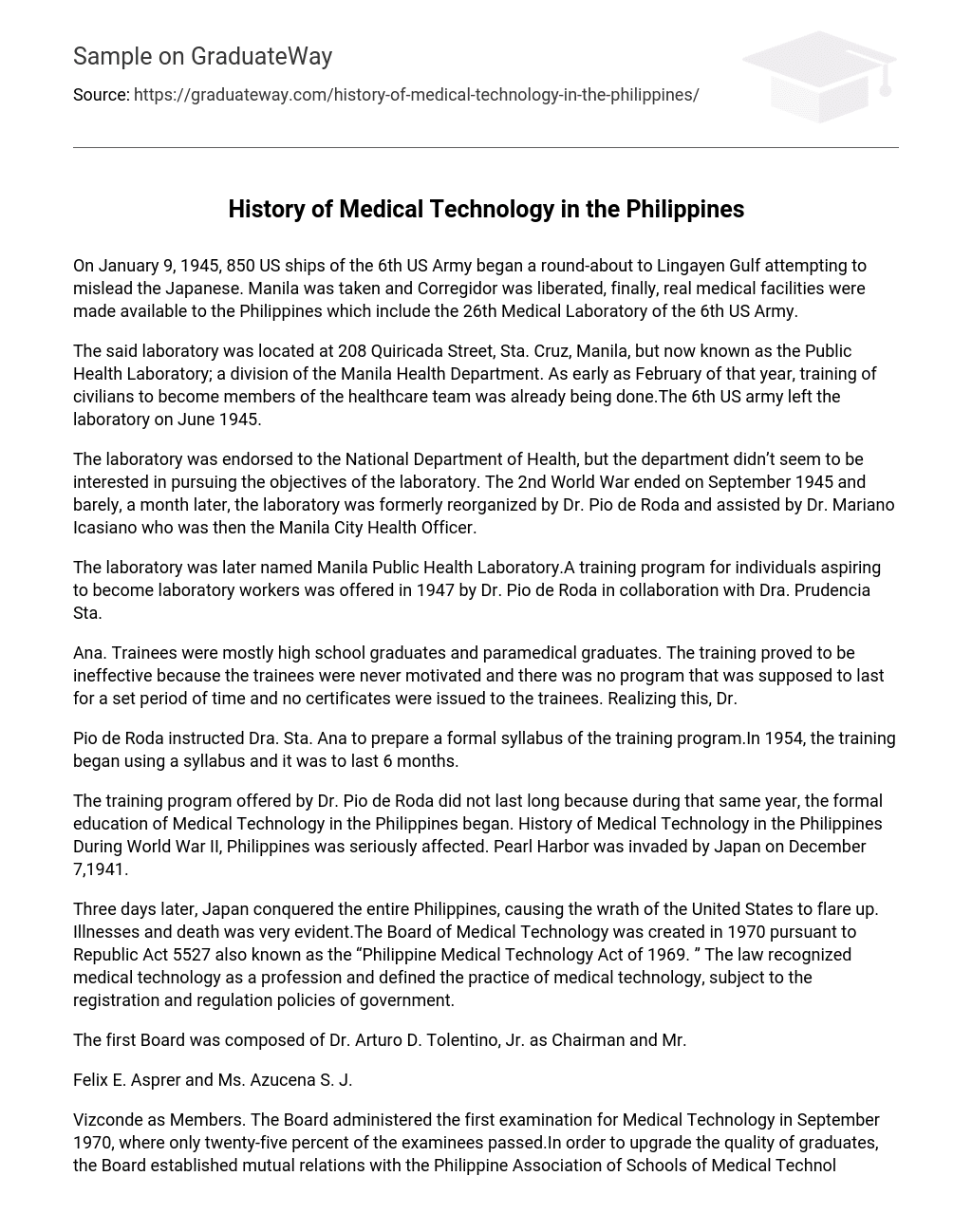On January 9, 1945, 850 US ships of the 6th US Army began a round-about to Lingayen Gulf attempting to mislead the Japanese. Manila was taken and Corregidor was liberated, finally, real medical facilities were made available to the Philippines which include the 26th Medical Laboratory of the 6th US Army.
The said laboratory was located at 208 Quiricada Street, Sta. Cruz, Manila, but now known as the Public Health Laboratory; a division of the Manila Health Department. As early as February of that year, training of civilians to become members of the healthcare team was already being done.The 6th US army left the laboratory on June 1945.
The laboratory was endorsed to the National Department of Health, but the department didn’t seem to be interested in pursuing the objectives of the laboratory. The 2nd World War ended on September 1945 and barely, a month later, the laboratory was formerly reorganized by Dr. Pio de Roda and assisted by Dr. Mariano Icasiano who was then the Manila City Health Officer.
The laboratory was later named Manila Public Health Laboratory.A training program for individuals aspiring to become laboratory workers was offered in 1947 by Dr. Pio de Roda in collaboration with Dra. Prudencia Sta.
Ana. Trainees were mostly high school graduates and paramedical graduates. The training proved to be ineffective because the trainees were never motivated and there was no program that was supposed to last for a set period of time and no certificates were issued to the trainees. Realizing this, Dr.
Pio de Roda instructed Dra. Sta. Ana to prepare a formal syllabus of the training program.In 1954, the training began using a syllabus and it was to last 6 months.
The training program offered by Dr. Pio de Roda did not last long because during that same year, the formal education of Medical Technology in the Philippines began. History of Medical Technology in the Philippines During World War II, Philippines was seriously affected. Pearl Harbor was invaded by Japan on December 7,1941.
Three days later, Japan conquered the entire Philippines, causing the wrath of the United States to flare up. Illnesses and death was very evident.The Board of Medical Technology was created in 1970 pursuant to Republic Act 5527 also known as the “Philippine Medical Technology Act of 1969. ” The law recognized medical technology as a profession and defined the practice of medical technology, subject to the registration and regulation policies of government.
The first Board was composed of Dr. Arturo D. Tolentino, Jr. as Chairman and Mr.
Felix E. Asprer and Ms. Azucena S. J.
Vizconde as Members. The Board administered the first examination for Medical Technology in September 1970, where only twenty-five percent of the examinees passed.In order to upgrade the quality of graduates, the Board established mutual relations with the Philippine Association of Schools of Medical Technology and Hygiene (PASMETH) in developing and updating the course syllabi to improve the performance of schools in the licensure examinations. Through the years, the Board has ensured that medical technologists are able to perform the responsibility of aiding physicians in the diagnosis, study and treatment of diseases and in the promotion of health in general.
With the impending liberalization of trade in services, the Board actively participates in the Consultative Meetings of PRC regarding the ASEAN Negotiations on Services and Mutual Recognition Agreement. It coordinates with the Philippine Association of Medical Technologists (PAMET) and other CPE providers to improve the professional skills and values systems of professionals and to adopt the latest technological developments in their field. Today, medical technologists are serving in hospital and free-standing laboratories, clinics, pharmaceutical companies, schools, food and cosmetic industries here and abroad.





